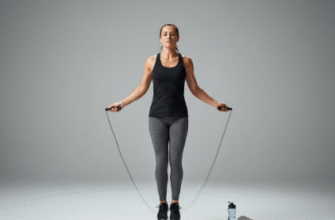Figuring out the absolute perfect moment in your day to exercise feels like chasing a mythical creature sometimes. You hear whispers about the dawn patrol burning more fat, or evening sessions unlocking peak strength. The truth? It’s far less about a universal magic hour and much more about finding the rhythm that syncs perfectly with your own unique life, body, and preferences. Forget the rigid rules preached online; the truly “best” workout time is the one you can actually stick with consistently and feel good doing.
Let’s be honest, carving out time for fitness is often the biggest hurdle. Adding the pressure of finding the scientifically ‘optimal’ minute can just make it feel more daunting. Instead of getting bogged down in conflicting studies, let’s explore the different time slots and see which one might resonate most with *you*. It’s about self-discovery, not conforming to an arbitrary standard.
The Early Bird Advantage: Seizing the Day
There’s a certain allure to getting your workout done before the world fully wakes up. For many, morning exercise offers a powerful sense of accomplishment right off the bat. You’ve ticked a major self-care box before emails start pinging or daily demands creep in. This can set a positive, energetic tone for the rest of the day. Consistency can also be a major win here; morning routines are often less susceptible to being derailed by unexpected afternoon meetings or evening social plans.
Many early exercisers report feeling more alert and focused throughout the morning after their session. It can feel like kick-starting your internal engine. Plus, gyms are often less crowded, meaning less waiting for equipment and a potentially calmer atmosphere. If you find your energy naturally peaks earlier or that distractions easily pull you away later in the day, the morning might be your sweet spot.
However, the crack-of-dawn approach isn’t without its challenges. First and foremost, you have to actually *get* out of bed, which can be a monumental struggle, especially on cold, dark mornings. Your body might also feel stiffer initially, requiring a more thorough warm-up. Some people find their absolute peak strength or endurance isn’t quite there first thing, feeling they perform better once their body has naturally warmed up over several hours. It also requires planning the night before – getting workout clothes ready, prepping breakfast, and ensuring you get to bed early enough.
Who Might Thrive Here?
- Individuals who value consistency above all else.
- People whose schedules get unpredictable later in the day.
- Those who enjoy the feeling of accomplishment early on.
- Morning people who naturally have more energy after waking.
- Anyone seeking quieter gym environments.
The Midday Mover: Breaking Up the Grind
Squeezing in a workout during a lunch break or a midday lull offers a different set of benefits. It can be a fantastic mental reset, providing a distinct break from work or daily tasks. Stepping away from your desk or routine for some physical activity can combat the afternoon slump many experience, potentially boosting productivity and focus when you return. For some, this time aligns with a natural energy peak, making it feel like a good window for performance.
A midday session breaks the day into manageable chunks. It avoids the early alarm clock and doesn’t interfere with evening plans. If you have access to a gym near your workplace or can utilize a home setup, it can be logistically convenient. It’s also a chance to get some sunlight if you opt for an outdoor activity, which can be a mood booster.
The biggest constraint here is often time. Lunch breaks aren’t always long enough for a full workout, travel time to a gym (if needed), changing, and showering. It requires efficient planning and potentially a shorter, more intense workout style. Eating lunch also needs careful timing – exercising on a full stomach isn’t ideal, but working out ravenous isn’t great either. Depending on your job and facilities, the logistics of changing and freshening up can be awkward.
Who Might Thrive Here?
- People with flexible work schedules or longer lunch breaks.
- Those who work from home or have convenient gym access.
- Individuals who experience a significant afternoon energy dip.
- Anyone looking for a mental reset during the workday.
The Afternoon/Early Evening Energizer: Peak Performance Potential?
This tends to be the most popular time slot for hitting the gym or engaging in fitness activities, and for good reason. Many people find their physical performance peaks in the late afternoon or early evening. Body temperature is naturally higher than in the morning, muscles may feel more pliable, and reaction times can be quicker. This might translate to feeling stronger during weightlifting sessions or having more endurance for cardio.
Mentally, it can be an excellent way to de-stress after a day of work or study. Shifting gears from mental exertion to physical activity can feel cathartic, helping to shed the day’s tensions. It’s also often a more social time at gyms or fitness classes, which can be motivating for some. You’ve typically had a couple of meals by this point, meaning energy stores (glycogen) are likely well-stocked for a solid effort.
The primary downside? Crowds. Gyms are often busiest during these peak hours, leading to waits for equipment or crowded classes. Your own energy levels might be flagging after a long day, making motivation harder to muster. Unexpected overtime or spontaneous social invitations can also easily disrupt an evening workout plan. Finding the energy after a demanding day requires discipline.
Finding Your Fit: Remember that physiological peaks are based on averages. While many people perform well in the afternoon, your personal energy patterns might differ significantly. Pay close attention to how *you* feel and perform during different times. Personal experience trumps generalised data every time.
Who Might Thrive Here?
- Individuals whose schedules are free in the evenings.
- People who feel physically strongest or most energetic later in the day.
- Those who use exercise primarily as a post-work stress reliever.
- Individuals motivated by busier, more social gym environments (or who don’t mind them).
The Late-Night Lifter (or Yogi): Winding Down Your Way
For true night owls or those with unconventional schedules (like shift workers), late evening workouts might be the only viable or preferred option. Gyms are typically much quieter, offering a focused environment similar to early mornings, but without the early alarm. For some, physical activity later in the evening can actually be a way to unwind and prepare the body for rest, especially if it’s a lower-intensity activity like stretching or yoga.
It offers maximum flexibility if your days are packed and unpredictable. You don’t have to rush after work, and there’s less pressure from impending commitments. If you find solitude calming and focusing, the late-night quiet can be a significant draw.
The biggest concern often raised is the potential impact on sleep. Intense exercise close to bedtime *can* interfere with sleep for some individuals by raising core body temperature and heart rate, or releasing stimulating hormones like adrenaline. However, this effect varies greatly from person to person. Lower energy levels after a full day can also make high-intensity workouts feel more challenging. Safety can also be a factor depending on the type of activity and location (e.g., running outdoors late at night).
Sleep Sensitivity Check: Pay close attention to your sleep quality if you choose to exercise late. If you find yourself struggling to fall asleep or waking frequently after late workouts, consider shifting earlier or opting for less intense activities like stretching or gentle yoga. Prioritizing sleep is crucial for overall well-being and fitness progress. Don’t sacrifice essential rest for a late session if it negatively impacts you.
Who Might Thrive Here?
- True night owls who are most alert and energetic late in the evening.
- Individuals with very busy or unpredictable daytime schedules.
- People who prefer very quiet, empty gyms.
- Those who find moderate exercise helps them wind down (but monitor sleep impact).
- Shift workers whose ‘day’ operates on a different clock.
Finding Your Personal Sweet Spot: Key Considerations
Okay, we’ve toured the clock. Now, how do you zero in on what works best for *you*? It boils down to honestly assessing a few key factors:
Your Natural Energy Rhythms: Are you genetically predisposed to leap out of bed (an early bird/lark) or do you come alive after sunset (a night owl)? Working *with* your natural chronotype, rather than fighting against it, often leads to greater consistency and enjoyment. Forcing yourself into a 5 AM workout when you’re a natural night owl might be unsustainable torture.
Logistics and Schedule Realities: This is huge. Look realistically at your daily commitments – work hours, family responsibilities, commute times, social life. When do you genuinely have a reliable block of time, even if it’s just 30 minutes? Don’t create a plan based on an ideal fantasy schedule; build it around your actual life.
Workout Type and Goals: Does the type of exercise you prefer lend itself better to a certain time? Maybe a calming yoga session feels perfect first thing or last thing, while heavy lifting feels better when you’re fully fueled and warmed up in the afternoon. Consider what you want to achieve – if it’s stress relief, post-work might be ideal. If it’s pure consistency, maybe morning wins.
Trial and Error: The absolute best way to find your fit is to experiment. Don’t just try one time slot for a single day. Commit to trying mornings for a week or two, then afternoons, then evenings. Keep a simple log: How did you feel? What was your energy like? How did you perform? How did it impact your sleep and the rest of your day? This personal data is invaluable.
Consistency Over ‘Perfection’: This cannot be stressed enough. The time of day that allows you to show up most consistently is, by definition, the best time for you. A ‘suboptimal’ workout that happens regularly is infinitely better than the ‘perfectly timed’ workout that rarely occurs. Focus on building the habit first and foremost.
Ultimately, the quest isn’t for a universally perfect time, but for *your* sustainable time. It’s about integrating movement into your life in a way that feels supportive, not stressful. Listen to your body, respect your schedule, and be willing to experiment. The right time slot is the one that makes exercise a seamless and enjoyable part of your routine, day after day.








